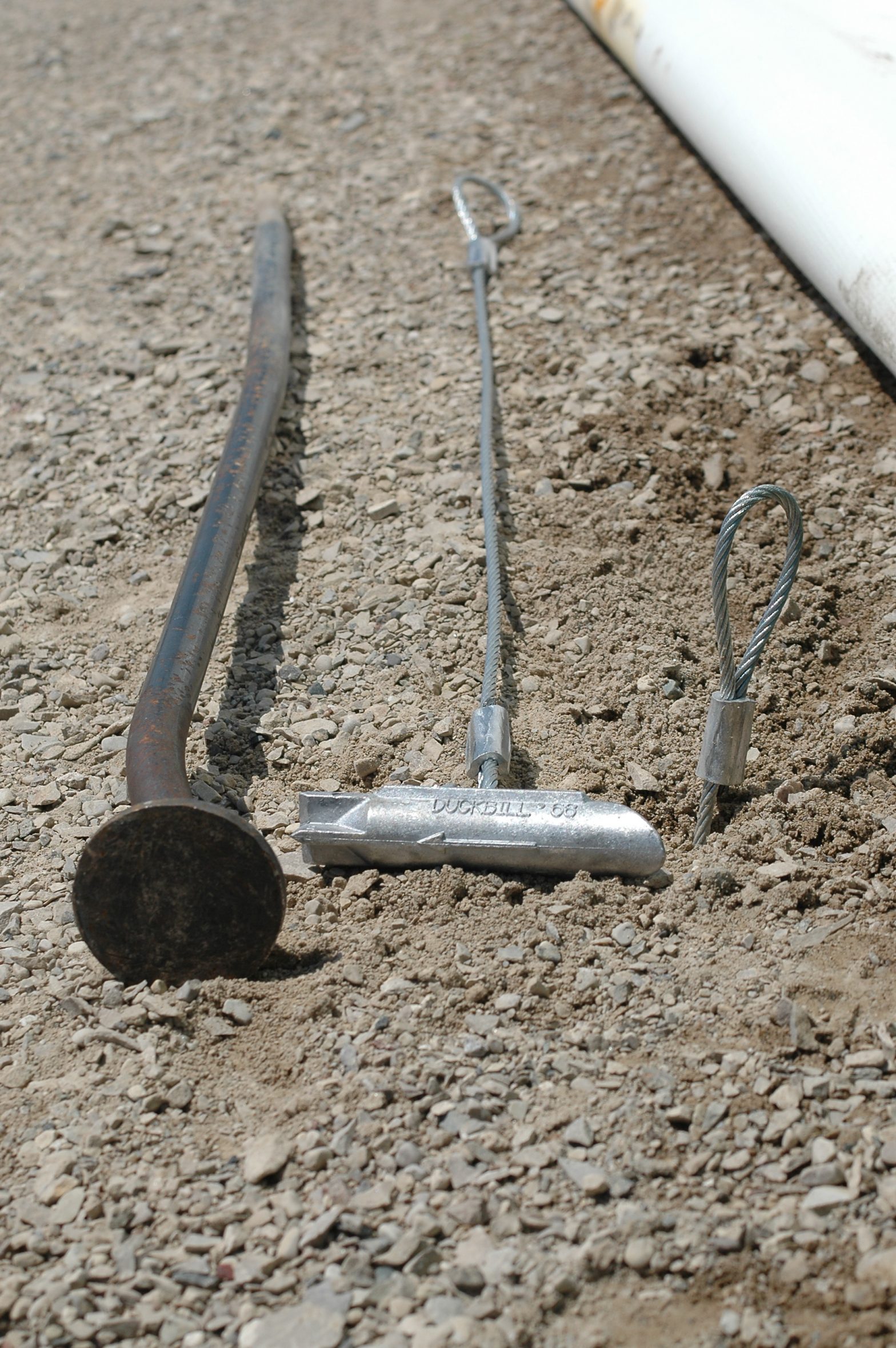In today’s fast-paced world, where extreme weather events are becoming more frequent, safeguarding your prized possessions is paramount. If you own a carport or car shelter, it’s crucial to anchor it securely to prevent it from becoming vulnerable to wind, hail, and heavy snowfall. Read on to unravel the simple and effective techniques for anchoring your car shelter, empowering you to protect your vehicle and provide peace of mind during inclement weather.

Image: baileylineroad.com
Before embarking on this task, a brief overview of the significance of car shelter anchoring is worthwhile. Imagine a sudden gust of wind catching your unanchored car shelter like a sail, tossing it about like a leaf in the storm? The consequences could be catastrophic, ranging from minor damage to severe destruction. Anchoring your car shelter is the bedrock of ensuring its stability, longevity, and ultimately, the safety of your vehicle sheltered beneath.
Anchor Types for Car Shelters – Exploring the Options Tailored to Your Needs
The vast array of anchoring systems available may leave you perplexed, but understanding their distinct attributes will guide you towards the optimal choice for your specific carport or car shelter. Let’s explore them one by one:
Stake Anchors
– Driven into the ground, these anchors provide a firm hold for car shelters erected on soil or soft surfaces.
– Auger-type stake anchors burrow deep into the earth, ensuring unmatched stability.
– Choose stake anchors when your car shelter rests on soil or when concrete footings are impractical.
Concrete Pad Anchors
– Concrete pads offer an immovable foundation for your car shelter, providing exceptional stability.
– Cast concrete footings directly into the ground or bolt them onto existing concrete surfaces.
– Concrete pad anchors are ideal for car shelters on stable ground or where permanent anchoring is desired.

Image: www.pinterest.com
Ground Anchor Systems
– These anchors consist of a large corkscrew design that is screwed into the ground, creating a secure hold.
– Ground anchors are particularly effective in areas where soil conditions may not be suitable for stake or pad anchors.
– Their compact design allows for discreet installation, making them aesthetically preferable.
Anchoring Techniques – Step-by-Step Guidance for Unwavering Security
With the anchor type selected, let’s delve into the step-by-step process of anchoring your car shelter, ensuring it stands firm against the elements.
Stake Anchors: A Sturdy Option for Soil Surfaces
1. Mark anchor locations according to the car shelter’s manufacturer instructions.
2. Use a sledgehammer or post driver to drive stake anchors into the ground until they are flush with the surface.
3. Securely fasten the car shelter’s frame to the stake anchors using bolts, nuts, and washers.
Concrete Pad Anchors: The Pinnacle of Stability
1. Excavate a square hole for each concrete footing, following the dimensions specified by the manufacturer.
2. Pour concrete mix into the holes and level it off.
3. Embed anchor bolts into the wet concrete, ensuring they are positioned correctly to align with the car shelter’s frame.
4. Allow the concrete to cure for the recommended duration before attaching the car shelter.
Ground Anchor Systems: A Versatile Solution for Challenging Conditions
1. Determine anchor locations based on the car shelter’s specifications.
2. Use a power drill to create pilot holes for the ground anchors.
3. Screw the ground anchors into the ground, ensuring they are buried at the appropriate depth.
4. Secure the car shelter’s frame to the ground anchors using the provided hardware.
Expert Insights – Tapping into the Knowledge of Seasoned Professionals
“Anchoring your car shelter is not merely an afterthought; it’s a crucial step to safeguard your investment and ensure the longevity of the structure,” emphasizes Bob Vila, a renowned home improvement expert. “By following the appropriate anchoring techniques, you can rest assured that your car shelter will withstand the ravages of even the most extreme weather conditions.”
Echoing this sentiment, Mike Holmes, a respected Canadian contractor, advises, “Never underestimate the importance of proper anchoring. Taking shortcuts or neglecting this step can lead to costly repairs or even complete structural failure down the road. Investing time and effort in anchoring your car shelter is an investment in peace of mind.”
How To Anchor Car Shelter
Actionable Tips – Empowering You to Anchor with Confidence
1. Always refer to the manufacturer’s instructions for specific anchoring requirements for your car shelter.
2. Choose the anchor type that best suits your soil conditions and